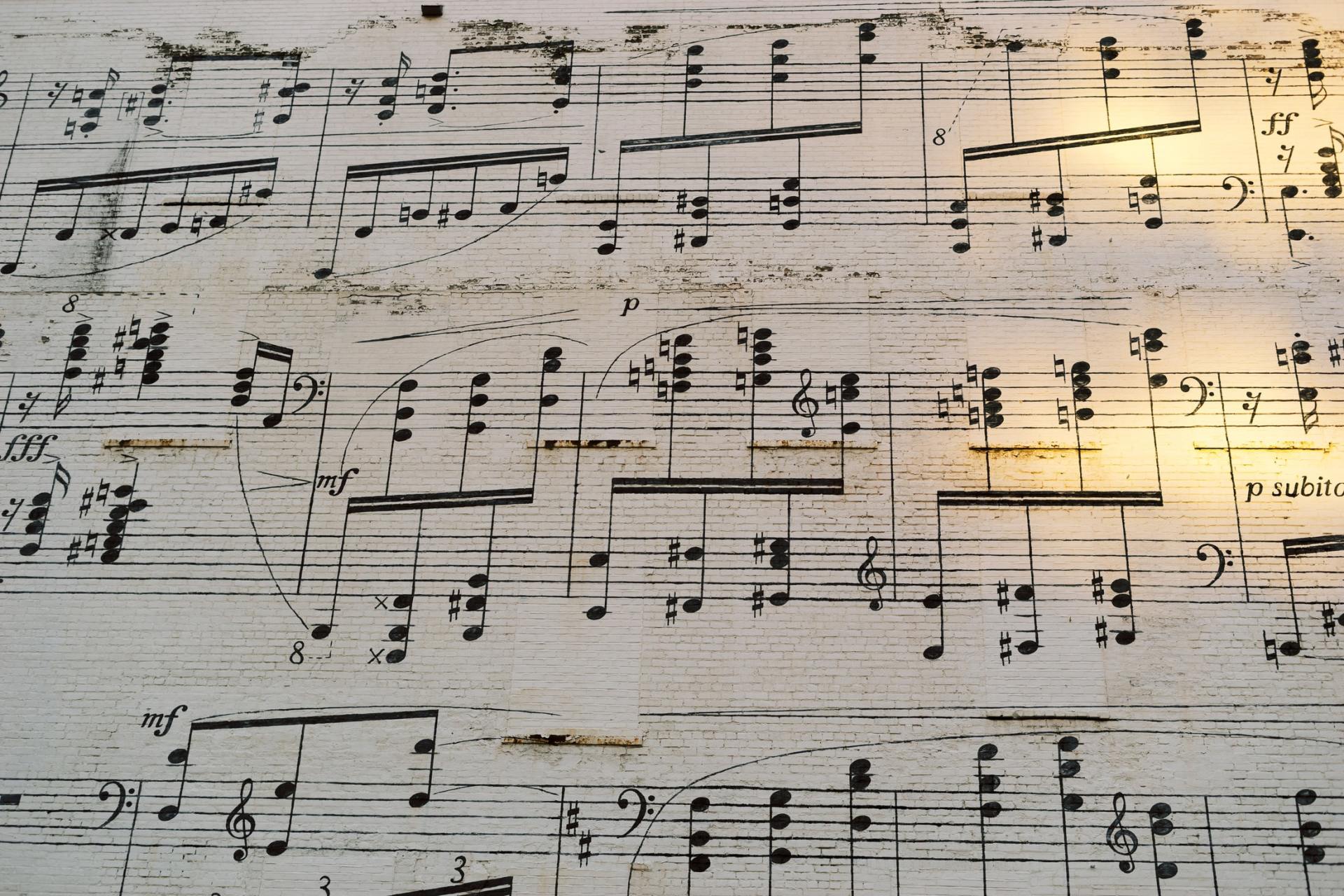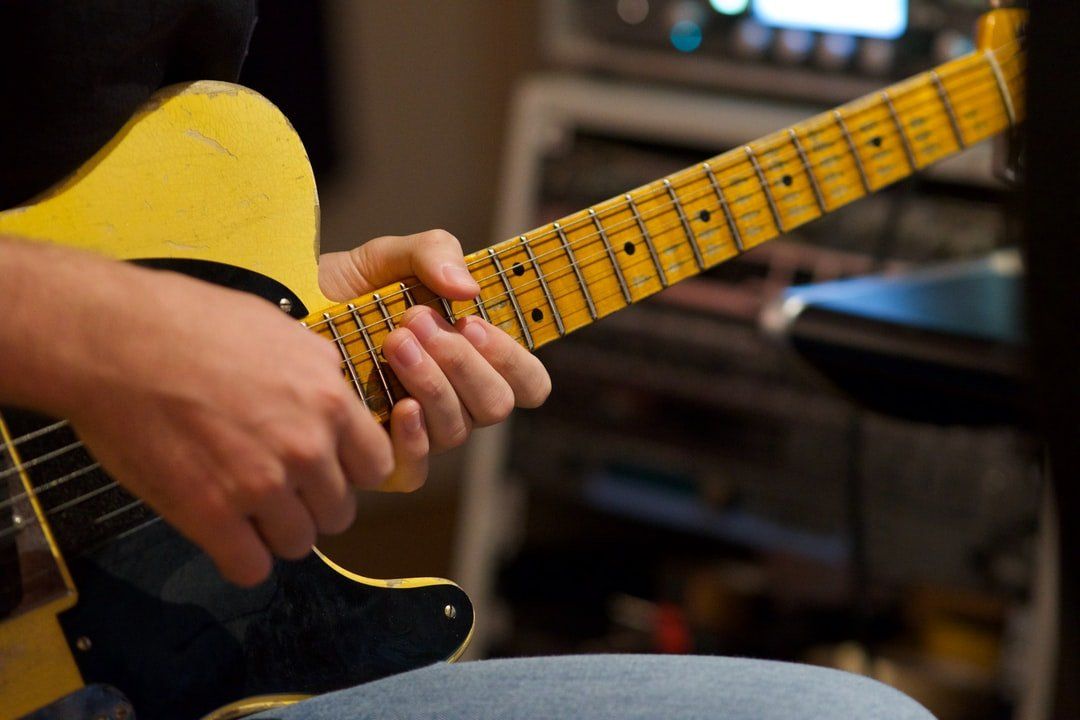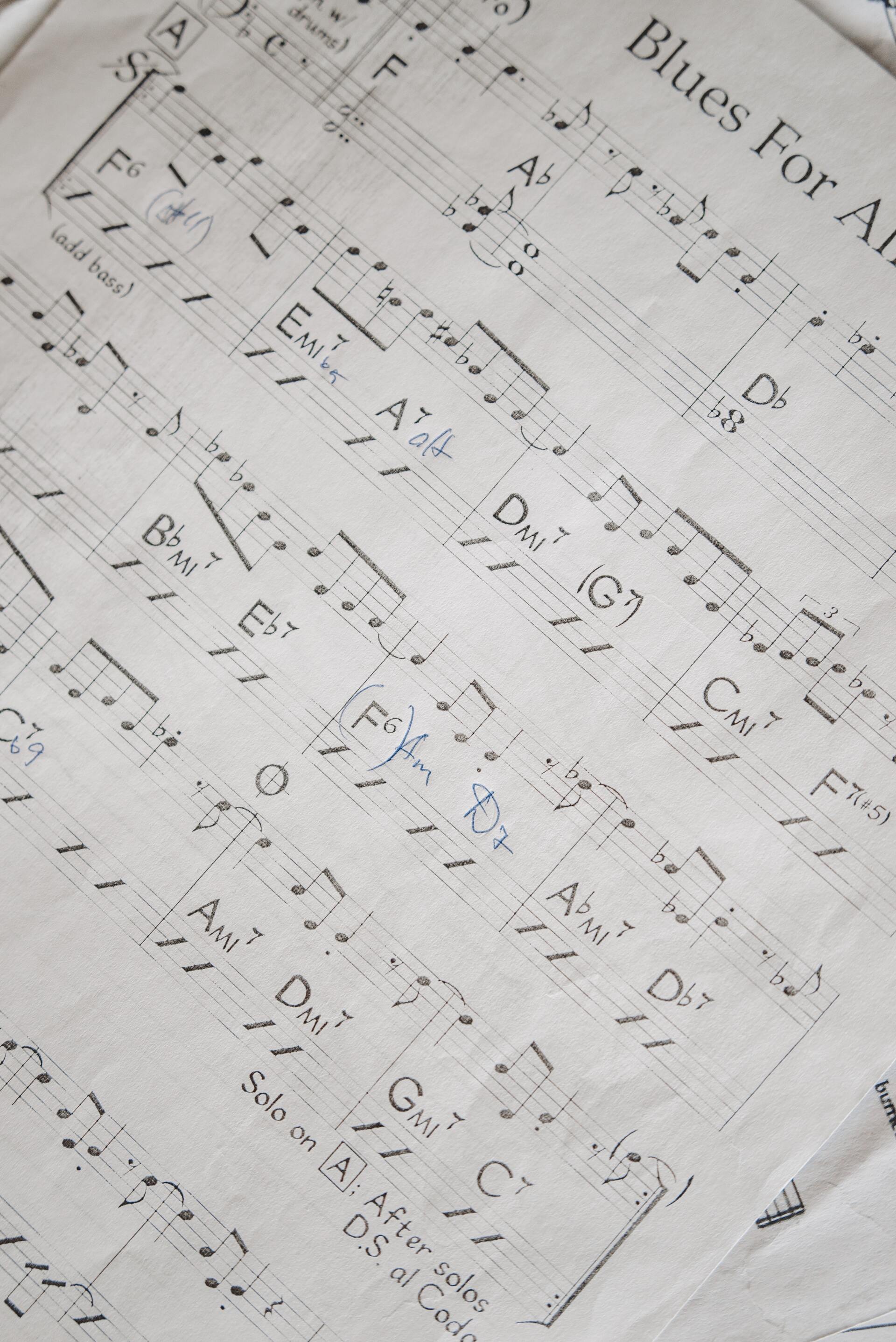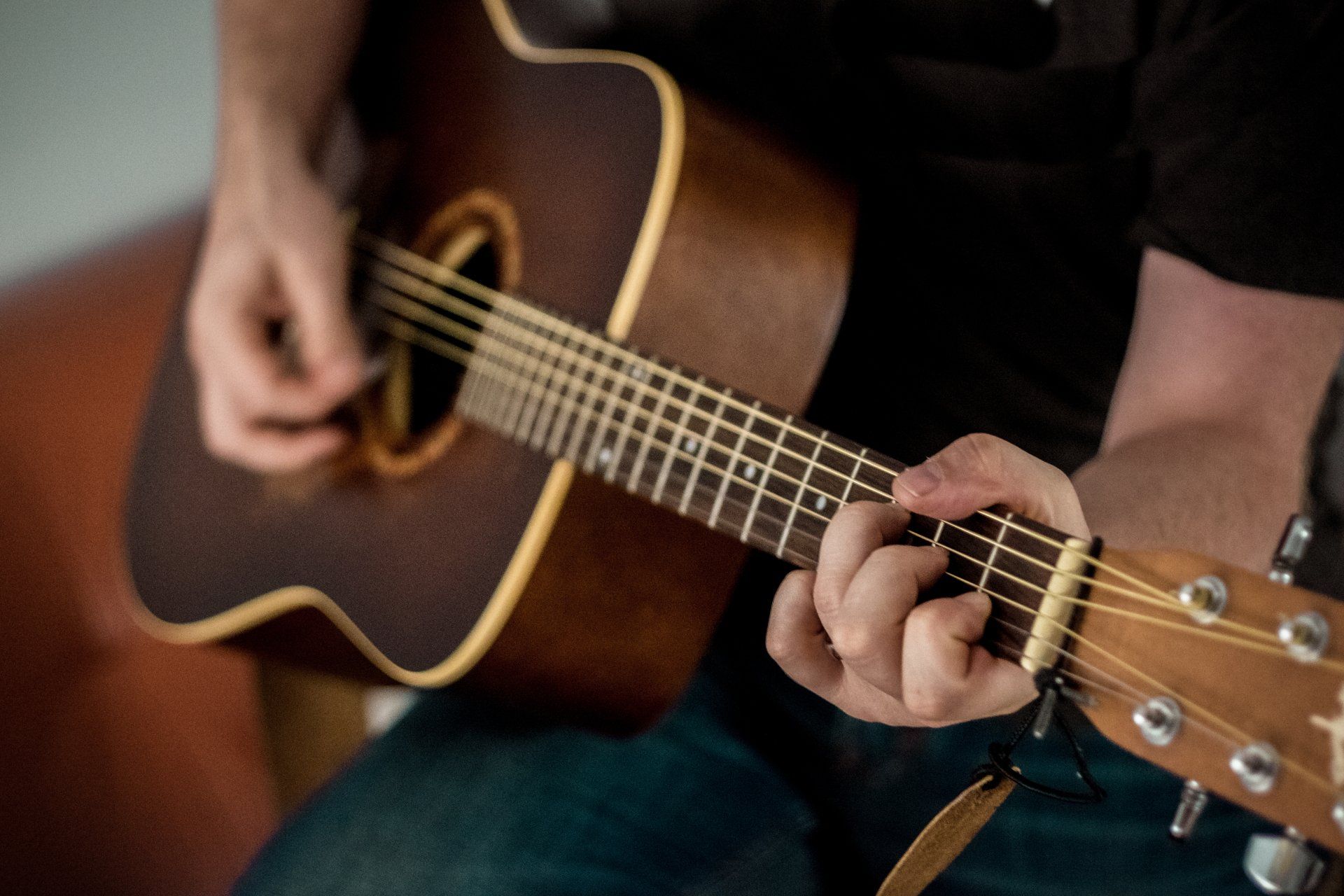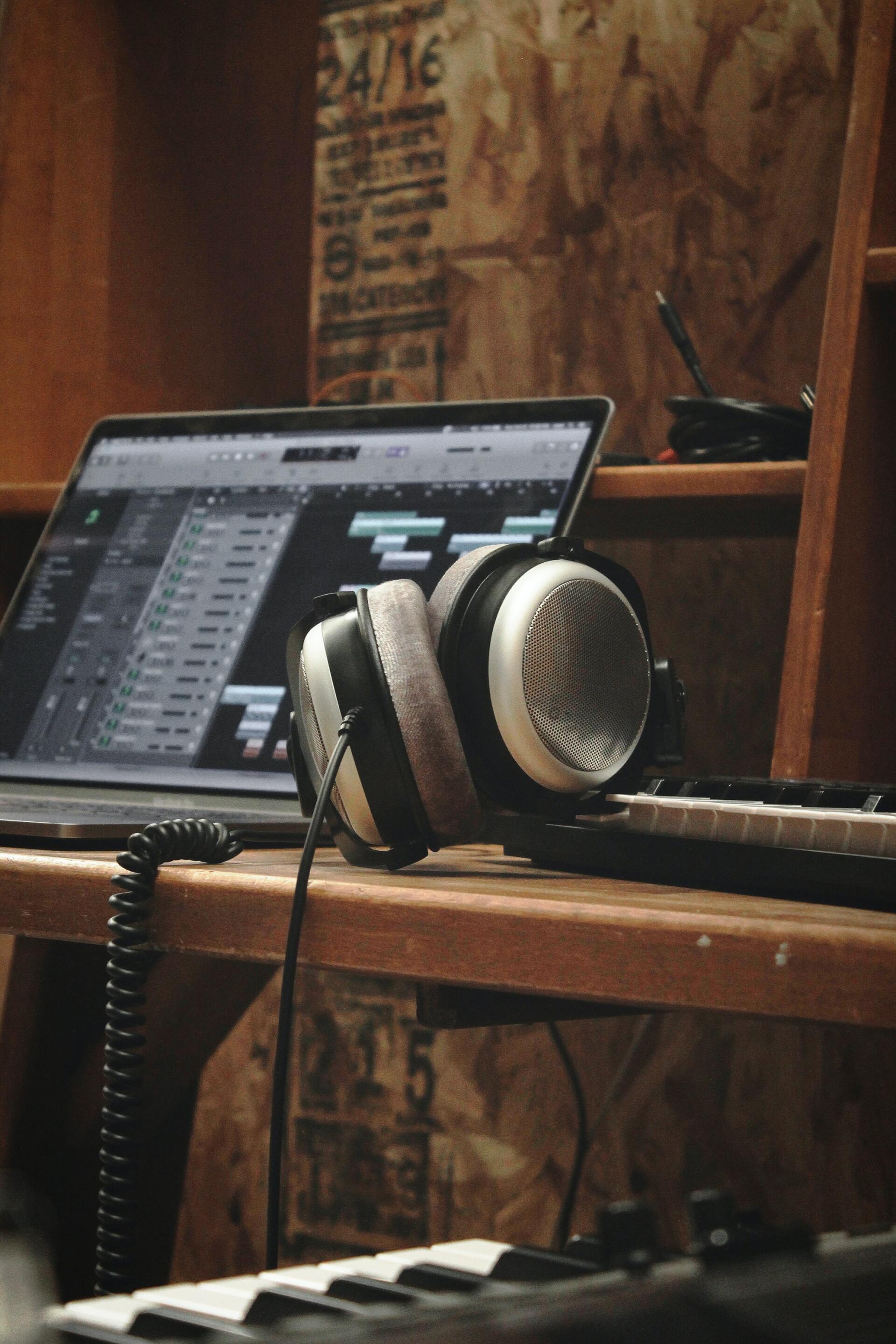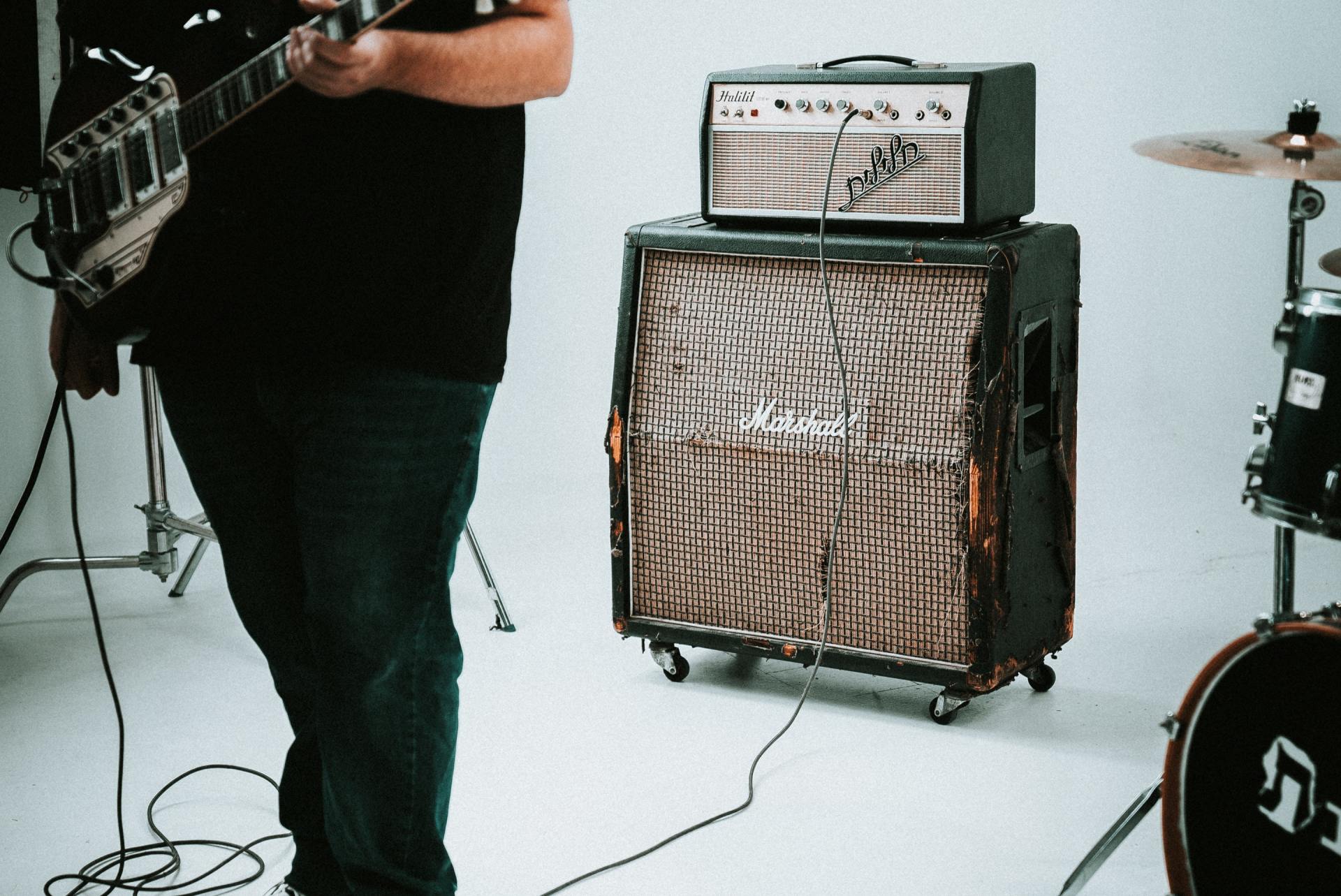The Top 9 Mobile Apps for Music Production
A few decades ago, had you prophesized that soon one day we’d be able to create music on our telephones, you’d struggle to find someone that believed you. The Rolling Stones would have their 19th nervous breakdown, Elvis would call you the devil in disguise, and David Bowie would think you quite the space oddity.
Nevertheless, here we now are, in a world where you need only pick up your mobile to record, arrange, edit, mix and master anything you can imagine. Music production hasn’t quite transcended the studio yet, but it’s getting a step closer thanks to evolving apps on faster and faster devices.
If you still don’t believe that number-one hits can come from your trusty pocket computer, here’s the proof you’ll need, our list of the top 9 mobile apps for music production.
Our selection of the top music production apps:
- Chordsheet Maker
- Steinberg Cubasis
- MixPads
- Image-Line FL Studio Mobile
- Propellerhead Figure
- BandLab
- Music Maker JAM
- Auria Pro
- GroovePad
1. Chordsheet Maker
Function: Creating chord and lead-sheets
Pros: Instant export and file sharing; exceptionally intuitive; clean layout with clever button placement; rhythmic notation; transpose your music;
Cons: No audio playback; lacking comment feature
Price: $5.99
Platform: iOS
When you think about writing music, you’re probably imagining some singer passionately scribbling away on crumped paper, with plenty of blotchy ink, illegible handwriting and crossed-out mistakes. Chordsheet Maker is the far more efficient means of notating your songs, creating chord and lead sheets directly on your device.
This interface is pleasantly intuitive, where the developers have favoured functionality over confusing menus and hidden settings. A clear, minimalist layout ensures you can see exactly where to add rhythmic intonation or annotations. The only features you’ll find and the ones you actually need.
A key feature is the touch-and-drag triads, where you can create complex chords with a single finger gesture. Tap your base note and drag to the appropriate position to add extensions and create the specific triad. As soon as you’re ready, you can export as a PDF file for easy sharing or use in other apps.
Chordsheet Maker allows you to get your next hit song down on the page as swiftly as possible, making the earliest steps of music production more enjoyable.
2. Steinberg Cubasis
Function: Digital Audio Workstation (DAW)
Pros: extremely capable software; huge library of effects and presets; record at 24-bit/96 kHz; MiniSampler for creating unique instruments; unlimited track count
Cons: steep learning curve; no demo version
Price: $19.99-29.99
Originally a lite version of the hugely successful studio software Cubase, this mobile app has since been “rewritten from the ground up” to include a much more impressive range of professional features. It’s arguably the closest one can get to a full DAW, providing endless possibilities for your music.
There is an unlimited track count, and you can process audio/MIDI groups as if they were single track. You can add up to 8 insert and send effects, choosing from an expansive library of 502 presets. If that isn’t enough customization for you, there’s also 301 instrument sounds and 200 MIDI drum loops included, along with a 126-preset virtual analog synthesizer.
Expect all the hits, like EQ, reverb, delay, phaser and overdrive, with the option of purchasing extras like an ultramaximizer or vintage FX. For hands-on production, there’s a virtual keyboard and drum pad, but you can also use hardware and sequence apps that are compatible with coreMIDI. You can export MIDI files, too.
Expert musicians will seriously struggle to find a mobile DAW more comprehensive than Steinberg Cubasis, making it must-have software for professionals.
3. MixPads
Function: Drum pad and DJ audio mixer
Pros: load audio files from storage; supports 96 kHz sample rate; YouTube and SoundCloud integration; engaging design and easy navigation; finger drumming;
Cons: poor recording options; incompatibility issues can cause crashes;
Price: Free (in-app purchases)
Platform: Android
Aspirational DJs will surely be thrilled with MixPads, a simple yet elegant solution for multi-track mixing. The entire software operates through an instinctive interface of 12 one-shot pads, which can consist of lead, bass, drums, voice and various audio effects.
MixPads comes with a wide range of sample packs, specifically catered to DJ pads and in various genres, such as Techno, Trance, Trap, House and Hip Hop. If you’re already working on something great, you can load your audio files and go from there, making this a go-to app for remixing. Audio formats like mp3, wav, ogg, aac and flac are all supported, amongst many others.
In terms of DJ effects, you can use delay, reverb, notch low/high pass, low/high shelf and a few more. The app has VST plug-in support, so you could add alternative studio effects. You can even record your own voice, or object sounds, and apply the various effects loaded up, which makes production both more convenient and creative.
If you need a way to produce DJ beats effortlessly, without worrying about thousands of dials and settings, MixPads offers a fun, practical means of doing so.
4. Image-Line FL Studio Mobile
Function: DAW
Pros: intuitive interface; generous amount of real-time effects; step sequencing; low CPU load; audio recording; touch controller pinao & drums; rapid project sharing;
Cons: No instrument sampling; sample rate capped by your device;
Price: $14.99
Based on the successful Xewton Music Studio, this mobile app isn’t a direct port of FL Studio on Windows, though you can expect to see the majority of features make it over. There’s various instrument modules, including MiniSynth with 70 presets, Drum Sampler with 133 kits and loops, and Transistor Bass.
You will also be able to make use of 10 studio-grade effects, such as reverb, chorus, compressor, auto ducker, delays and a few different EQs. For free experimentation, there’s a 99-track step sequencer and various sampling options for instantly transforming your beats into loops.
Compared to other DAWs in our round-up, Image-Line FL Studio Mobile is potentially a better match for the less experienced. The interface feels natural; in fact, thanks to adaptive screen resolution, the software looks great on your phone, tablet or even TV.
The major drawback is a lack of editable instruments, a feature which is revered in the desktop version. The upside to this lack of variety is perhaps that the software does draw lower CPU load, which will deliver a smoother experience on less capable devices.
If you’re looking for the simple, reliable route to recording, sequencing and mixing epic synth beats, Image-Line FL Studio Mobile is the perfect place to start your next project.
5. Propellerhead Figure
Function: Casual music production with drums, bass and lead melodies
Pros: Exciting play pad; beginner-friendly utilities; 200 Import and enhance your existing tracks; project samples provided; easy XY-automation; fantastic look
Cons: No automatic multi-track export; shouldn’t be considered a professional tool
Price: Free
Platform: iOS
In the words of the developers, “Create an addictive beat before the barista brings your coffee or lay down a beefy bass line while waiting for the bus to arrive.” Aimed at beginners and experts alike, Figure offers you the chance to compose songs using bass synth, lead synths and drums, though other instruments are supported.
Assuming you already have a track recorded, you are able to import into the app before applying some final touches. Try audio effects like chorus, flanger, distortion and pump, or change key and tempo instantly with a single touch.
Novice music producers will enjoy the freedom to experiment without compromising the final sound. For instance, you create music by simply sliding your fingers across the play pad, yet the app keeps you in the set key whenever you go. Though you’ll be developing your songs “on the fly,” features like the arpeggiator, which creates melodies from chords, keeps any dissonance at bay.
Industry professionals looking for powerful applications probably won’t find solace in Propellerhead Figure. Dynamic control is limited, as is the export functionality. However, you are able to export to iTunes File Sharing, stream live to audiobus-compatible apps, and integrate with SoundCloud.
As an inspirational tool, or simply a way to add a fresh dimension to a track, Propellerhead Figure is as fun and intuitive as it gets!
6. BandLab
Function: Social DAW
Pros: Completely free forever; impressive social features; excellent collaboration with version tracking; huge library of samples and loops; AutoPitch; unlimited storage
Cons: interface might intimidate beginners; needs more mastering tools
Price: Free
If something sounds too good to be true, it usually isn’t, right? Well, BandLab’s philosophy that everyone should have access to music-making tools seriously disrupts that paradigm. Even though the software is 100% free, you get unlimited projects, storage and downloads, all with over 10,000 royalty-free loops.
Users can record/import audio, make use of 200+ instruments, enhance with FXs, and even use super-convenient professional features like AutoPitch, magnetic timeline and tap tempo. On top of all that, there’s thousands of beats and loops so expect to have serious fun while exploring the BandLab library.
Another huge bonus of BandLab is the ability to create a ‘band’, where numerous collaborators can work on the same song without making irreversible changes. You can ‘fork’ the track, meaning original versions aren’t lost if someone else decides adds effects. There’s also a full version history, so you can track changes and return to earlier work whenever.
BandLab is a truly special software for recording, mastering and sharing your music, a social hub that promotes collaboration and encourages everyone to get creative without spending a cent.
7. Music Maker JAM
Function: DJ Audio mixer
Pros: 8-channel mixer; record external voice; 300+ mix packs; user-friendly interface; really enjoyable remixing experience;
Cons: limited scope outside of supported genres;
Price: Free (in-app purchases, including subscription service)
For musicians who aren’t technically trained, Music Maker JAM offers an effortless solution for creating drum-bass beats and adding melody. You can record external audio, meaning you can sing, rap, or use foley sounds to liven up your track. Alternatively, you’re able to remix popular tracks and share with a global community of music makers.
Music Maker JAM leans towards electronic music, where the most popular genres are EDM, house, hip hop, dubstep and pop. Actually, there are over 100 music styles. With an 8-channel mixer, there’s no doubt you’ll be able to come up with something fresh.
The interface is clearly designed to be approachable. You can navigate between tools using an icon bar, so you adjust loops, bpm and FXs exceptionally quickly. You can adjust harmonies and individual song parts with simple sliders and instantly add effects, such as reverb, delay and stutter.
There’s over 300 mix packs and 500,000 loops, so the possibilities are legitimately endless. It really doesn’t matter whether or not you have expertise, either. As Music Maker JAM advertises, the software is for “DJs, beat makers, producers, or simply music lovers of all levels.”
Music composition comes to the masses with Music Maker JAM, a comprehensive and user-friendly software for building quality beats and roaring remixes.
8. Auria Pro
Function: DAW
Pros: incredibly versatile; truly professional grade; piano roll MIDI capabilities; real-time audio warping; groove templates; multi-format sampler; external hard drive support
Cons: less powerful devices might experience lag; some scrolling issues
Price: $49.99
Platform: iOS
Translating a digital audio workstation (DAW) from desktop to mobile isn’t an easy endeavor. Consequently, the majority of developers simplify their products to benefit performance or provide a more innovative format. Auria Pro, on the other hand, keeps everything very traditional, which experienced producers will definitely appreciate.
It accommodates the simultaneous recording of as many as 24 tracks, operating at 24-bits with sample rates of 44.1, 48 and 96 kHz. Each track has six aux sends and a ChannelStrip plug-in for adding effects and instruments, most notably EQ, compressor and expander modules. You’ll also be able to add reverbs, chorus and delays, amongst others.
Auria Pro features a complete MIDI sequencer with over 15 processing functions, such as legato, crescendo, velocity compression and transpose. You’re free to play around with MIDI parts by using the Piano Roll editor to either add, change, move or delete notes. You’ve got the option to record from external MIDI keyboards or use CoreMIDI-compatible interfaces.
One could easily argue that Auria Pro is the most professional mobile DAW out there. There’s insane routing capabilities with up to 32 internal busses for your most ambitious projects, portrait-mode 100mm faders for authenticity, and even external hard drive support for greater convenience.
Auria Pro is a full-featured, self-sufficient software for traditional music production, potentially the most powerful and comprehensive mobile DAW available.
9. GroovePad
Function: Drum pad and DJ Audio Mixer
Pros: External voice recording; high-quality effects; large library of samples; touch-and-drag filtering; offers coaching for specific beat packs;
Cons: No instruments; limited storage and export options
Price: Free (in-app purchases)
GroovePad is predominantly a beat making software, which is designed to be easily used by all. Featuring an extensive library of soundtracks, in popular electronic genres like EDM, Dubstep, House and Trap, you use live loops to layer your tracks and create original songs.
Similar to other apps of this type, you can record external audio, meaning you can create your own samples as well as single or rap. Either way, you’ll be able to add effects like reverb, delay and flanger to enhance your creations.
There aren’t any instruments on this software, so you simply focus on mixing sounds, rhythms and beats, creating pumping DJ tracks. The interface is colourful and stimulating, with fantastic touch functionality. As a result, the music production experience feels gamified, encouraging you to just relax and explore the sound packs.
If you’re a fan of electronic music, GroovePad is a definite contender for your favourite DJ audio mixing software, one which inspires you to improvise and share your results.
